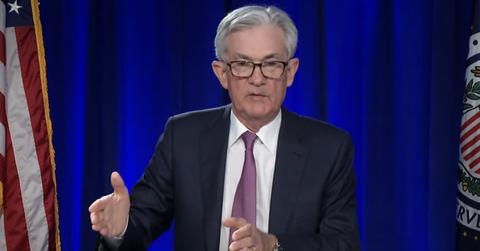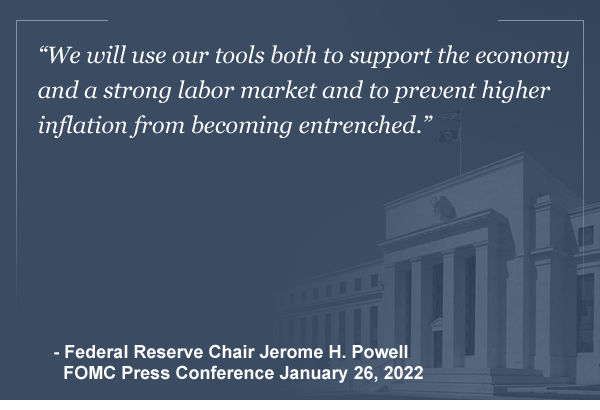Raising Interest Rates Has Far-Reaching Consequences
The Fed might raise interest rates as soon as March. What does raising interest rates do to an economy?
Jan. 28 2022, Published 10:35 a.m. ET

At the Fed’s first meeting for 2022, concluded on Jan. 26, the committee signaled that it plans to begin raising interest rates soon, aggressively unwinding last year’s bond-buying. Why does the Fed raise rates, and what does raising interest rates do?
Due to the pandemic, the Fed has kept federal fund rates near zero to stimulate the economy, which was reeling from the COVID-19 pandemic. However, with inflation at multidecade highs, rate hikes are needed. At its Dec. 2021 policy meeting, the Fed forecast three rate hikes in 2022.
The Fed’s dual mandate
The Fed has a dual mandate of maximizing employment and maintaining stable prices. It achieves that in various ways, such as monetary easing and tightening, open market operation and reserve requirement adjustments, and federal funds rate changes. The latter has far-reaching consequences.

The federal funds rate is the short-term interest rate at which U.S. financial institutions lend money to each other. The Fed sets a target for this rate, and in the process, all other rates are impacted, including short and long-term interest rates. The rates usually filter down to banks, which pass it on to their consumers.
Impact of higher interest rates on businesses and consumers
When inflation is running hot, the Fed increases interest rates. This causes the borrowing costs for consumers and businesses to climb, leading them to postpone or cancel projects that involve financing. Consumers are also left with less disposable income as interest on credit rises, reducing discretionary spending. Higher rates slow down business activity as well, slowing economic growth.
On the other hand, higher interest rates motivate people to save more and curtails money circulating in the system, tempering inflation.
Higher rates’ impact on stock and bond markets
Raising interest rates also impacts stock and bond markets, as higher rates increase the discount rate for a business’s cash flow. Growth stocks, which are expected to have cash flow in the far future, are impacted the most. The overall decline in consumer demand due to higher rates also hurts businesses, impacting their stock prices.
When interest rates are raised, value stocks usually do better than growth stocks. Banks and financial institution stocks also end up doing well, as they achieve wider margins and more profits on loans and financial transactions. Real estate stocks and home construction stocks are usually the worst hit.
As for bonds, there's an inverse relationship between bond prices and interest rates. As interest rates rise, the prices of existing bonds decline immediately because the new bonds released carry higher interest rates. Ideally, when interest rates are raised, you should reduce your long-term bond allocation in favor of short- to medium-term bonds, and shift some of your portfolio from growth to value stocks.
